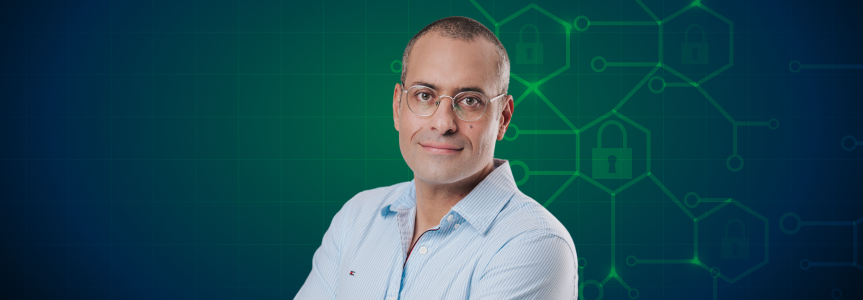Meet Aran Azarzar, JFrog’s New CIO
Traditionally, a company’s chief information officer (CIO), is a highly technical person who usually ‘sits in the back office’ and oversees the information technology department’s resources and staff. But that basic job description has dramatically evolved over the last decade, and now CIOs are considered one of the most strategic roles in the company, charged with fueling constantly shifting digital needs to support the business. Today’s CEOs, CTOs, and other C-suite colleagues look to the CIO to help identify and drive innovation, competitive differentiation, customer experience, and revenue-generating ideas throughout the business.
In this blog post, we had a chance to sit down with JFrog’s new CIO, Aran Azarzar, to learn a bit more about him as a person, his passion for people, processes, and new technologies, plus his vision for how to wield JFrog’s technology prowess to best its competition.
What was the biggest lesson you learned from your first job as a CIO?
Before becoming a CIO I worked closely with several different business units on a variety of projects, but as a CIO I learned you not only need to work with them, but also be part of their team. You must step into their shoes, understand their business challenges and vision for what they’re trying to accomplish in order to help them succeed. It’s essential for a CIO to be connected to the business needs and truly understand the value of the organization. To summarize, the modern CIO must be embedded in the ‘central nervous system’ of the organization in order to help influence both the top line and the bottom line simultaneously.
Who was the most influential mentor in your life and why?
Luckily, I was fortunate to have a handful of incredible mentors during my career. All of them have a deep business understanding on various topics and each contributed to my career in different ways. I think it is important to maintain a limited internal network of mentors, who are experts in many topics, with whom you can establish complete trust and benefit from their extensive experience.
Why did you choose JFrog and why now?
JFrog is over 14 years old, and yet, I think it’s just starting its journey in the software development market. As I’ve heard and read Shlomi Ben Haim say many times, “The world is eating software,” due to the many things running on software today – from our phones, laptops, and businesses to our cars, home appliances, and energy sources.
As we know, all software needs to be built securely, tested, distributed, and continuously updated, otherwise it will very quickly become irrelevant and vulnerable. It’s difficult to do this at scale when you’re running hundreds of thousands of apps across a globally distributed workforce. JFrog is the only platform that offers a completely integrated, secure way to create and maintain software at scale across the entire development lifecycle. It’s this key point of differentiation that I believe will help them win the market!
What do you see as the biggest challenges customers are facing today from an IT standpoint?
In a word: complexity. CIOs and CSOs today have a barrage of tools they’re using to battle everything, from simple application management and cross-team collaboration to security, data protection, and compliance. But the tool or technology in use is just one piece of the equation. IT leaders must first start by understanding the pain and then work backward to assess the source of the problem to find the correct solution. But you also want to look for a solution that is universal, scalable, open, and will grow with your organization over time as your needs change.
How do you manage policies and regulations around where data can reside?
Companies can’t really formulate a good strategy for how to manage data privacy and sovereignty without a complete view of their data within each defined jurisdictional boundary. It’s best to start with a good map of your entire data landscape, identify the most important things you need to protect (i.e. the “crown jewels” if you will), and design policies and access rights around that to ensure you keep it safe while also remaining compliant.
How do you collaborate with CSOs and other C-suite colleagues to ensure success?
In some companies, the CIO and CSO work tightly together to help improve the employee, developer, and customer experience. This partnership is crucial because there’s no question our threat landscape is increasing, and while our natural instinct is to close everything, doing so is not feasible nor good for the business. Nor can we make everything open. By over-indexing in one direction or the other, no one wins. Thus, it’s important for CIOs and CSOs to work together on a strategy that best makes data accessible while keeping it secure. Unfortunately, the employee risk factor continues to be the greatest risk. I remember one of the executives in my previous companies said there would be no way they would ever click on a malicious link, and sure enough – one day they did. Thankfully the human factor can be addressed with education, awareness, policies, behavioral tracking, transparency, and open lines of communication so employees can flag concerns or ask questions about suspicious behavior.





